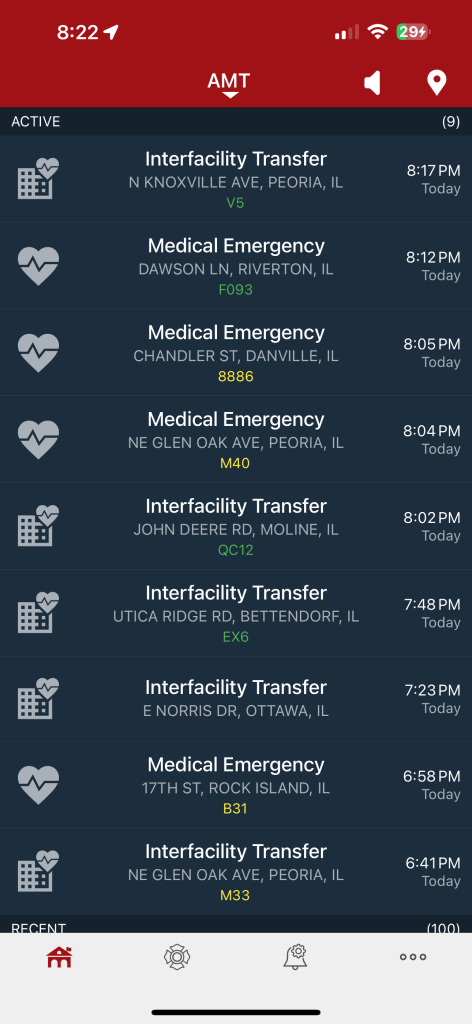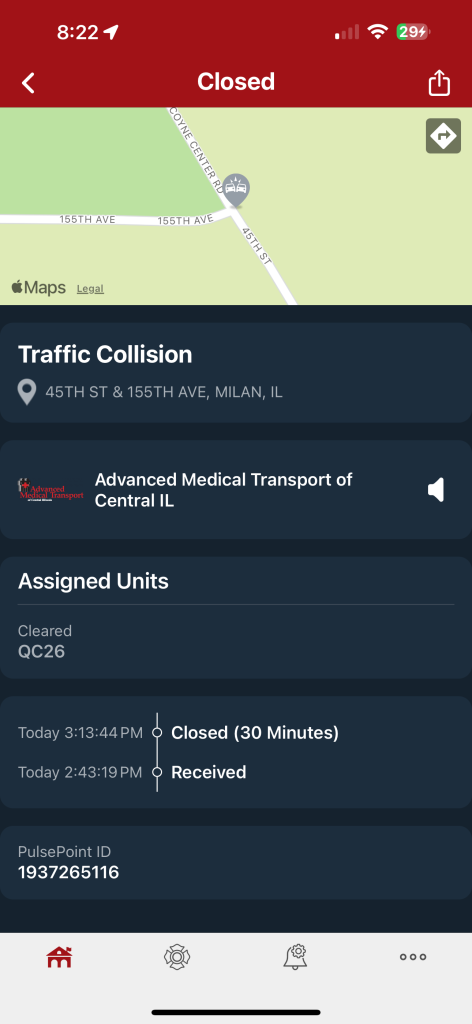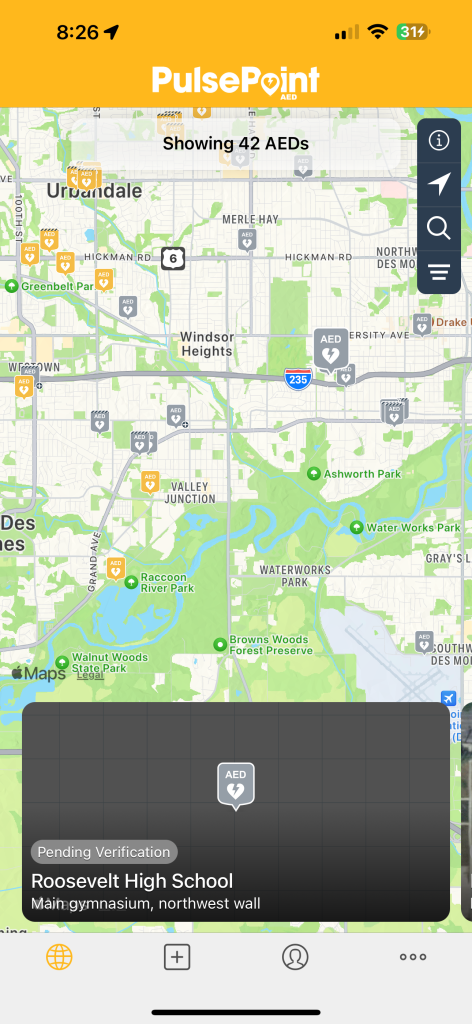Sometimes, you see an emergency and want to know what’s happening around you. And there are some apps out there like Citizen that will show you videos or people reporting what’s happening. I had to travel to Los Angeles quite a bit for work. I didn’t have much to do when I was done for the day. So I’d hang out in the La Brea Tar Pits, and occasionally, there’d be an incident. I could use the Citizen app to decide if I wanted to go to the La Brea Tar Pits or just avoid it?” That’s more looking around to see what you can find out about an incident.
How it Started
But another app tries to save lives when people around an area can help. This app is called PulsePoint. It is a 501(3)(c) organization. It has a foundation, and it’s made by a fellow named Richard Price, a California fire department captain. He said that one day, he was going to lunch, and he heard some sirens and saw one of his own engines pull up in front of a restaurant. And it turned out someone had a cardiac arrest inside the restaurant. And he was right there. He realized, “I was never sent to this restaurant because there’s no way of connecting me with where I’m at with whatever incident is going on.” He’s CPR trained. He has an AED in his car. He could have helped. So, in 2010, he came up with the idea for the app. He won the Webby Award for this application. Great job, Richard Price.

How It Works
It uses location-based technology and connects people who are trained in emergencies. Those who are not can check the app to see what is happening. Maybe they know someone who can help. So, when I look at the app, I generally see fires, car accidents, medical emergencies, and a map. I can see what agencies have responded.
The city and county must connect to the app to make that connection between the app and people who can help in emergencies. You can find PulsePoint pages on many municipalities, which indicate their participation in this program and provide instructions for first responders and citizens. The city I live in does participate in it.
Let’s imagine someone is having a cardiac event. The ambulance is over on that side of town. And boy, the traffic is bad right now. Every minute it takes for an emergency vehicle to get to where this incident is, the less that person will have a chance to recover. Time is of the essence. And so what this will allow you to do is say that you want to be alerted because you are CPR certified. But then, if a cardiac event happens, you will be alerted and able to run there. The idea is that these events notify people within walking distance of this event. However, the municipalities can determine how far that notification range should be.

They Also Provide Training
They have also provided CPR training to people so they can be first responders. We want to be able to train people who firmly believe that we, as citizens, are always the very first responders. So someone’s having a cardiac event, and I’m right there. I can be notified. I was watching some videos of this in action, and what happened is warming.
There are some stories of life-saving events on the web. A fellow was on a fun run, and he started having a cardiac event. And a fellow who was right there started doing CPR with him, but he’s not trained. He’s like me. I used to be trained, but it’s been a while. So, he started doing CPR the best he could. Immediately, a nearby lifeguard was notified, and he came running. He was able to take over for CPR from this guy because he knew a little bit more. Then, someone could bring an AED device that was available in a nearby park as marked on the map. This man recovered. It was a critical situation. Time was of the essence, and they were able to save this person’s life because this app connected everyone who could help.
Find Help in Medical Devices
In the end, the true power of connected devices shines with the combination of an iPhone, location information, and people who said they could be notified if needed. In 2019, they went beyond recording the AED and CPR registrations; they also started including Narcan, bleeding control kits, and epinephrine in EpiPens for people having allergic reactions.
How to Sign Up If You Want To Help
To sign up to be a CPR-trained person, you indicate you want to receive CPR notifications. You manage that yourself. But there is also officially registered CPR managed by your local government agencies and professional responders, fire people, police officers, and medical staff. They can manage their own list of those with that kind of training. There is also a traffic map so you can check to see if the ambulances will get there. Using the device’s notification system for an emergency is great for getting the right people to an incident.
PulsePoint AED
They have a second app called PulsePoint AED. The app shows the location of AED devices around an area on a map. Both apps have instructions on how to do CPR and how to use an AED device—someone who’s right there who can help and save a life. Check with your local agencies to see if they use PulsePoint or download the app and see if it populates with events. And if you do, make sure you put notifications on. If you are CPR trained, let the app know that you would like to be a part of that list, and you will get notified when there is a CPR event near you. Ultimately, PulsePoint shows the real power of sophisticated devices and how they can connect people to life-threatening events.

